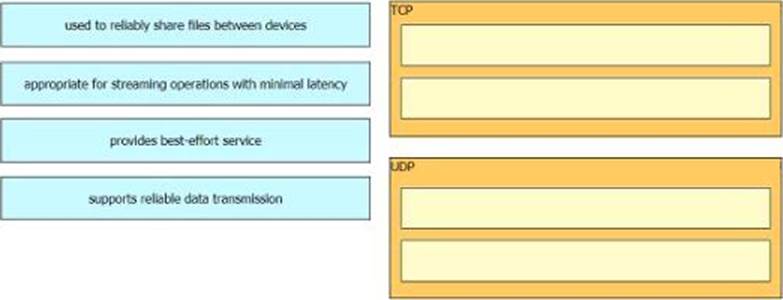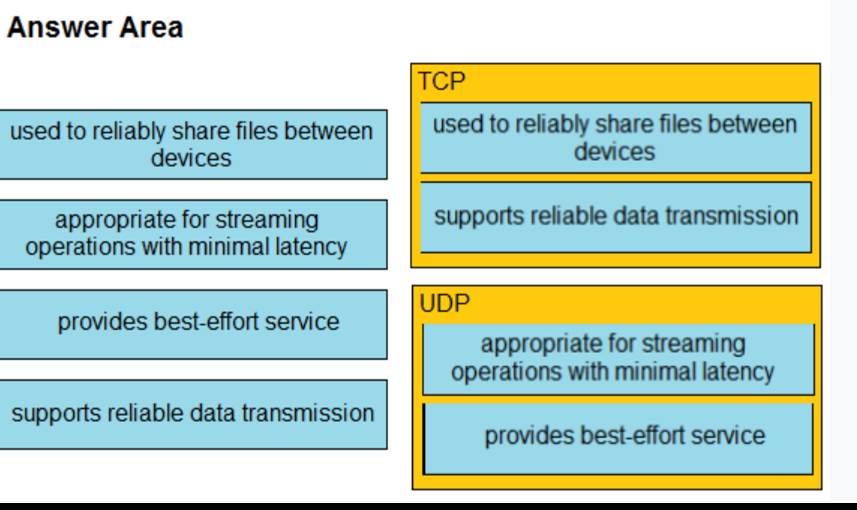Practice Free 200-301 Exam Online Questions
Refer to the exhibit.
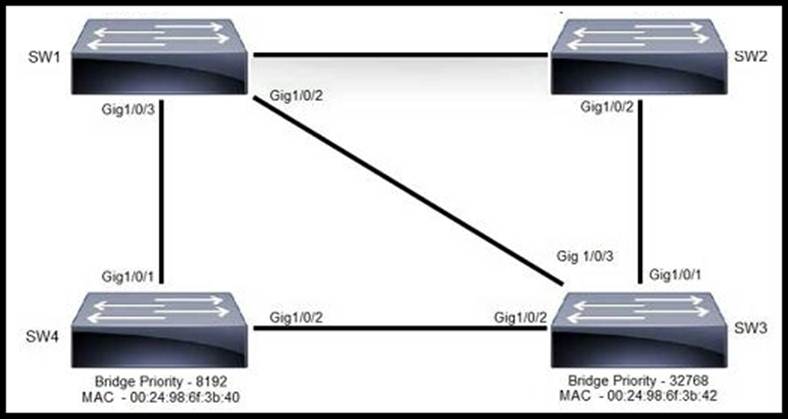
Rapid PVST+ mode is on the same VLAN on each switch.
Which switch becomes the root bridge and why?
- A . SW2, because its MAC address is the highest
- B . SW3, because its priority is the highest
- C . SW4, because its priority is highest and its MAC address is lower
- D . SW1, because its priority is the lowest and its MAC address is higher
DRAG DROP
Drag and drop the characteristic from the left onto the IPv6 address type on the right.
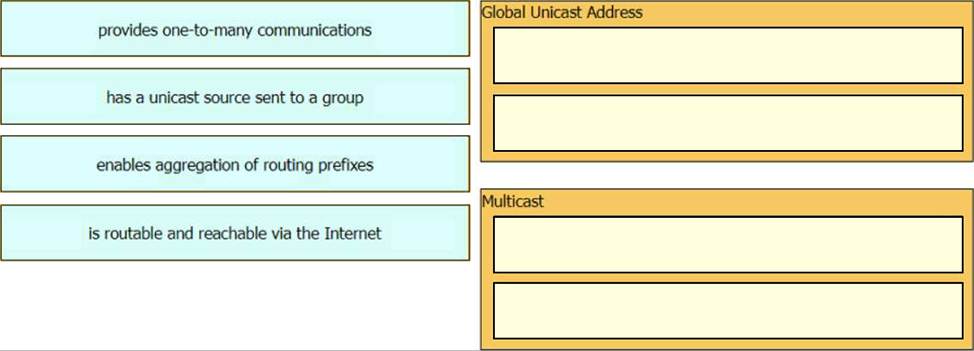
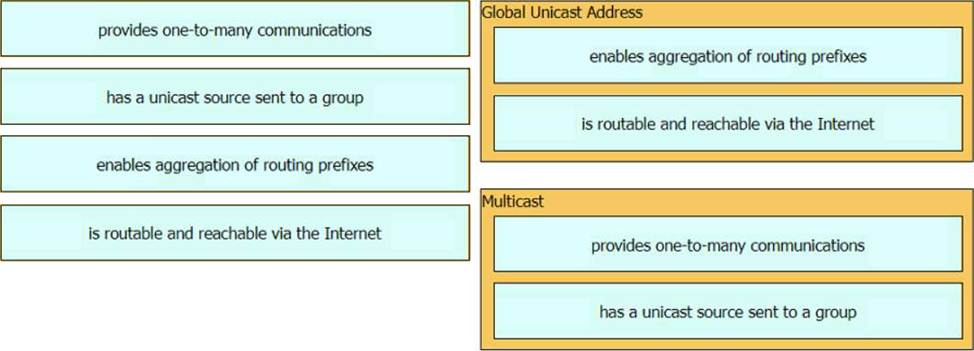
When deploying syslog, which severity level logs informational message?
- A . 0
- B . 2
- C . 4
- D . 6
D
Explanation:
https://en.wikipedia.org/wiki/Syslog
What criteria is used first during me root port selection process?
- A . local port ID
- B . lowest path cost to the root bridge
- C . lowest neighbor’s bridge ID
- D . lowest neighbor’s port ID
DRAG DROP
Drag and drop the WLAN components from the left onto the component details on the right.
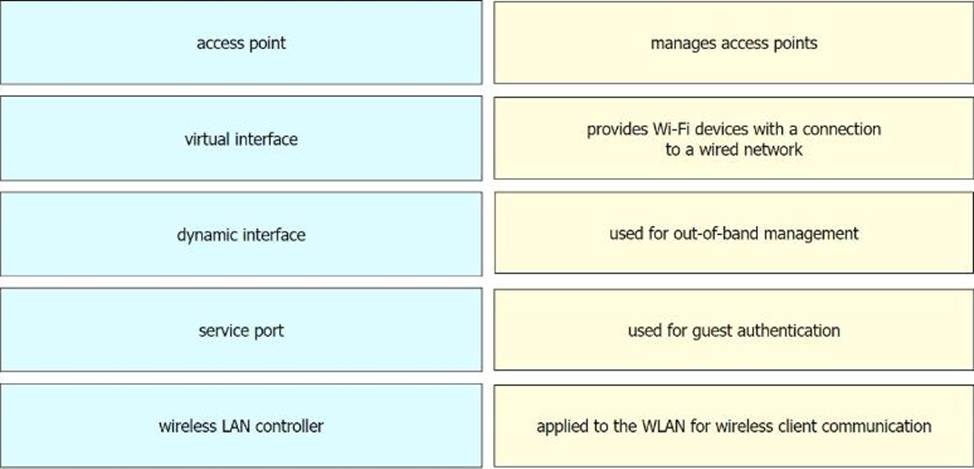
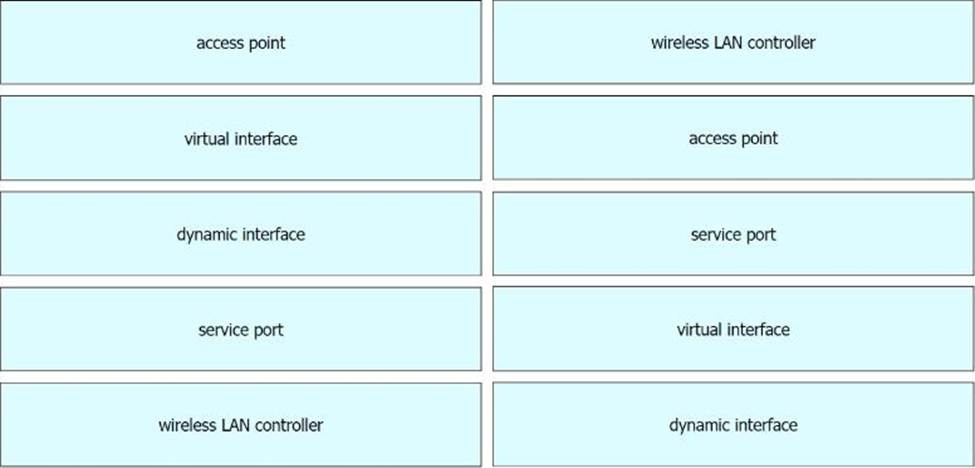
Refer to the exhibit.
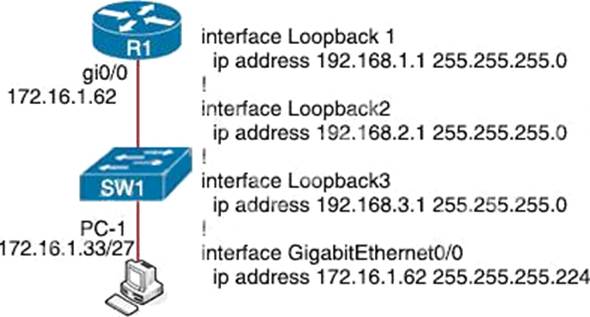
Which configuration on RTR-1 denies SSH access from PC-1 to any RTR-1 interface and allows all other traffic?
- A . access-list 100 deny tcp host 172.16.1.33 any eq 22
access-list 100 permit ip any any
interface GigabitEthernet0/0
ip access-group 100 in - B . access-list 100 deny tcp host 172.16.1.33 any eq 22
access-list 100 permit ip any any
line vty 0 15
access-class 100 in - C . access-list 100 deny tcp host 172.16.1.33 any eq 23
access-list 100 permit ip any any
interface Gigabit Ethernet0/0 ip
access-group 100 in - D . access-list 100 deny tcp host 172.16.1.33 any eq 23
access-list 100 permit ip any any
line vty 0 15
access-class 100 in
Refer to the exhibit.
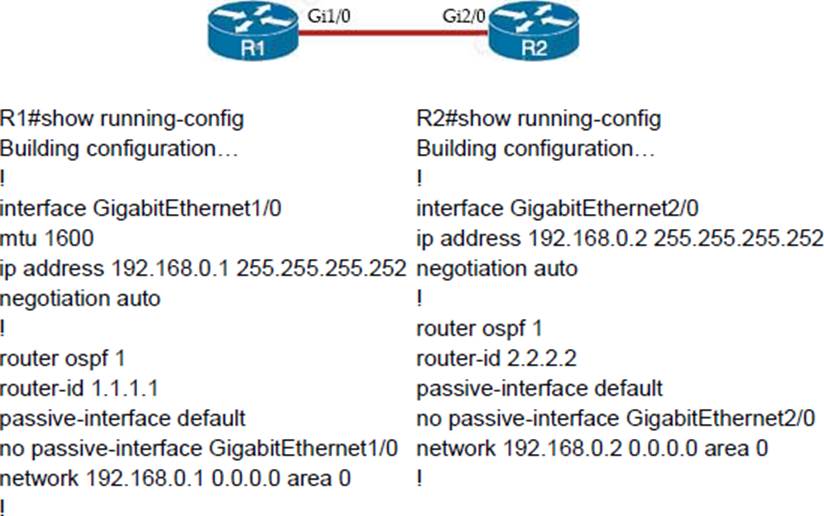
Which configuration issue is preventing the OSPF neighbor relationship from being established between the two routers?
- A . R2 is using the passive-interface default command
- B . R1 has an incorrect network command for interface Gi1/0
- C . R2 should have its network command in area 1
- D . R1 interface Gil/0 has a larger MTU size
DRAG DROP
Drag and drop the Ansible features from the left to the right Not all features are used.
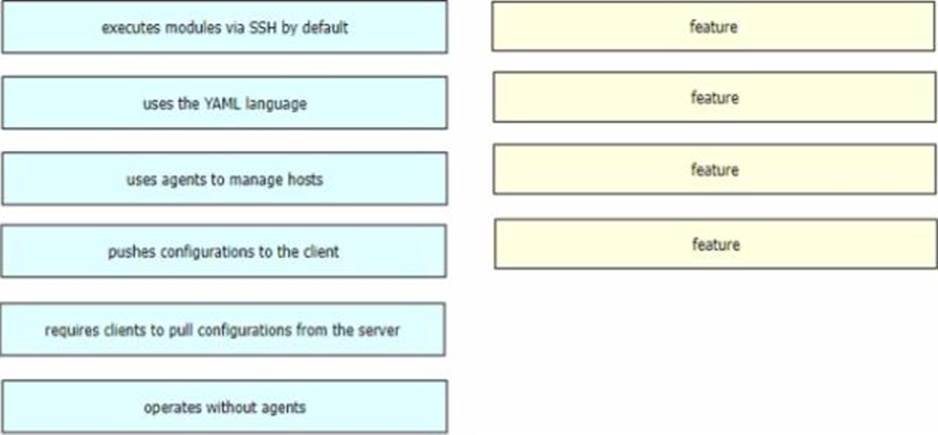
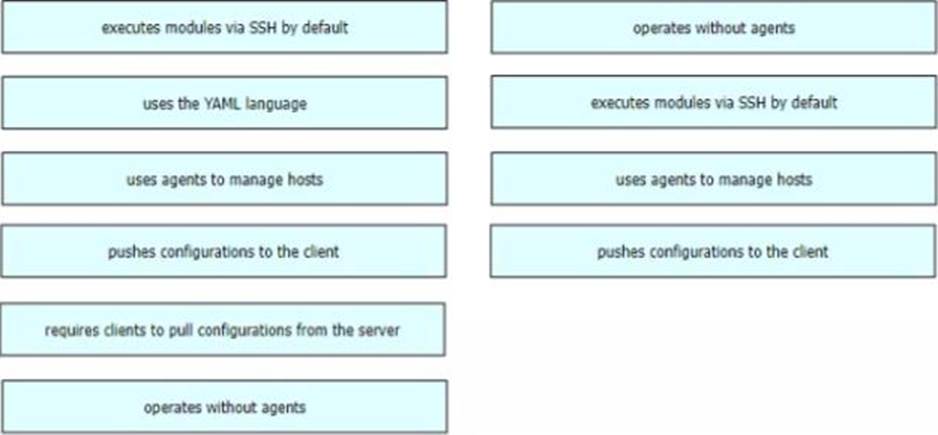
What is the difference between IPv6 unicast and anycast addressing?
- A . IPv6 anycast nodes must be explicitly configured to recognize the anycast address, but IPv6 unicast nodes require no special configuration
- B . IPv6 unicast nodes must be explicitly configured to recognize the unicast address, but IPv6 anycast
nodes require no special configuration - C . An individual IPv6 unicast address is supported on a single interface on one node but an IPv6 anycast address is assigned to a group of interfaces on multiple nodes.
- D . Unlike an IPv6 anycast address, an IPv6 unicast address is assigned to a group of interfaces on multiple nodes
DRAG DROP
Drag and drop the TCP or UDP details from the left onto their corresponding protocols on the right.
